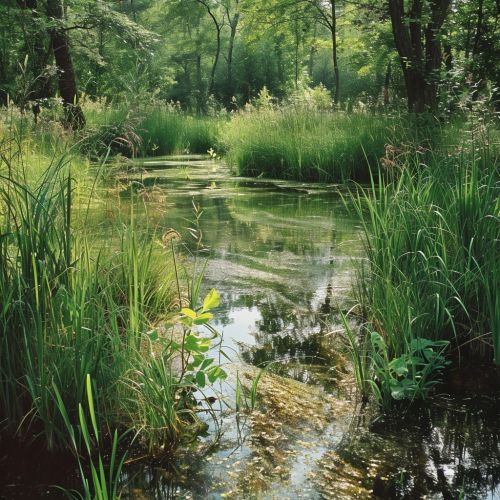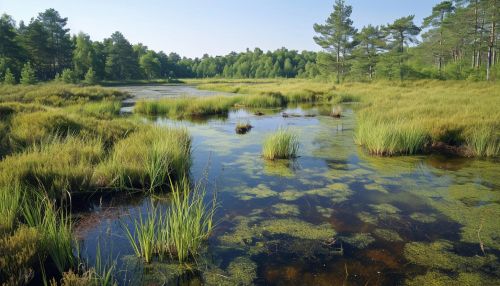Fens
Overview
A fen is a type of wetland characterized by mineral-rich, alkaline water, peat soils, and a diverse range of plant and animal life. Fens are formed over thousands of years as waterlogged, decaying plant material accumulates to form a thick layer of peat. The water in fens is typically sourced from groundwater, which is rich in minerals and nutrients, leading to a high level of biodiversity.


Formation and Characteristics
Fens are formed through a process known as paludification, which involves the accumulation of organic matter in a waterlogged environment over a long period. This process results in the formation of peat, a type of soil that is rich in organic matter. The water in fens is typically alkaline or neutral due to the presence of minerals such as calcium and magnesium, which are leached from the surrounding soil and rocks by the groundwater.
The physical characteristics of fens can vary significantly depending on factors such as the source of water, the type and amount of minerals present, the climate, and the types of plants that colonize the area. However, most fens share certain common features, including a high water table, peat soils, and a diverse range of plant and animal life.
Biodiversity
Fens are known for their high biodiversity, hosting a wide variety of plant and animal species. The plant life in fens is typically dominated by grasses, sedges, and reeds, with a variety of other plant species also present, including mosses, ferns, and various types of shrubs and trees. The animal life in fens can include a range of invertebrates, birds, mammals, and amphibians, many of which are specially adapted to the wet, nutrient-rich conditions.
Types of Fens
There are several different types of fens, which can be classified based on their physical and chemical characteristics, as well as the types of plant communities they support. These include:
- Rich fens, which have a high concentration of calcium and other minerals, and support a diverse range of plant species.
- Poor fens, which have a lower mineral content and are typically dominated by Sphagnum mosses and sedges.
- Alkaline fens, which have a high pH and are characterized by the presence of certain types of plants, such as brown mosses and certain types of sedges and grasses.
- Acidic fens, which have a low pH and are typically dominated by Sphagnum mosses and certain types of shrubs and trees.
Ecological Importance
Fens play a crucial role in the ecosystem by providing habitat for a wide variety of plant and animal species, many of which are rare or endangered. They also play a key role in water purification, as the peat in fens acts as a natural filter, removing pollutants from the water. In addition, fens are important carbon sinks, storing large amounts of carbon in their peat soils, which helps to mitigate climate change.
Threats and Conservation
Fens are under threat from a variety of factors, including drainage for agriculture, peat extraction, pollution, and climate change. These activities can lead to the loss of fen habitats, a reduction in biodiversity, and the release of stored carbon into the atmosphere, contributing to global warming.
Conservation efforts for fens typically involve protecting existing fen habitats, restoring degraded fens, and promoting sustainable land use practices. This can include measures such as prohibiting peat extraction, implementing buffer zones around fens to protect them from agricultural runoff, and promoting the use of sustainable peat alternatives.
